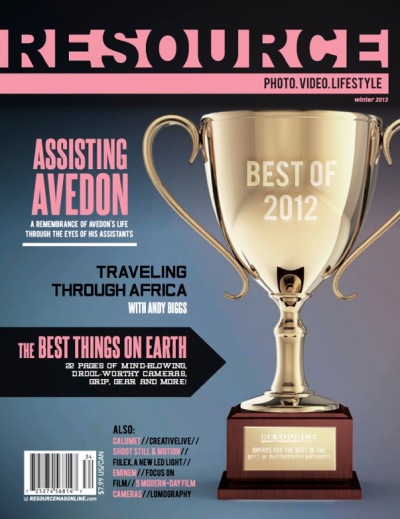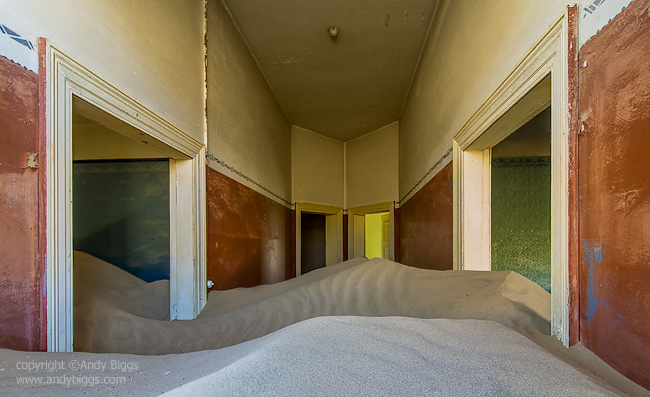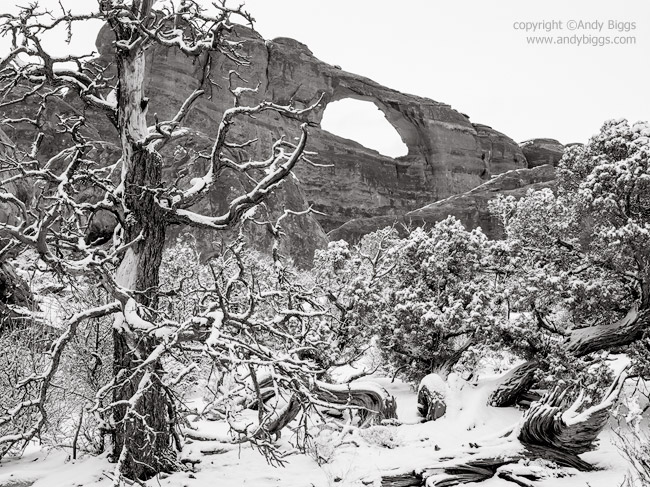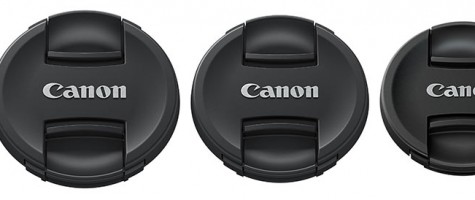
Leopard on a Branch
Canon 1Dx, 300mm f/4 L IS, 1/500 sec @ f/6.3, ISO 1600
A few months ago I led a pair of safaris into Botswana’s Okavango Delta, and here is my write-up from my experiences. My goal is to not bore everybody with a day-by-day account of all of our game drives and activities, but rather what made these two safaris unique and exciting. Read on…..
I left home the day after our USA Thanksgiving, and when I arrived in Botswana I spent 16 straight nights between two camps in the Okavango Delta: Nxabega Tented Camp and Sandibe Okavango Safari Lodge, both operated by &Beyond. These two camps are quite different in both lodging style as well as the ecosystems where they are located. Nxabega is considered more of a ‘wet’ camp, with both boating activities as well as game drives. Sandibe is a dry camp, especially later on in the season in the months of October, November and December.
Equipment Used
Even though I use a Phase One medium format system, I did choose to only bring along a small Canon kit that I rented from my friends over at Borrowlenses.com. Why did I not bring my Phase One gear? At the end of 2012 I can safely say that I was pretty darned tired from all of my travels with big and heavy gear. I also realized that I needed to return to my Canon roots and know what my Canon-shooting customers are using these days. Here is what I brought:
- Canon 1Dx
- Canon 70-200mm f/2.8 L IS II
- Canon 300mm f/4 L IS
- Canon 1.4x teleconverter
- Sony RX-100 point and shoot
That’s it. Seriously. I took a Gura Gear Bataflae 26L camera bag, and had tons of room leftover for clothing items. I didn’t bring a second 35mm camera because I just wanted to be simple about the trip, and if I had an equipment malfunction at least I knew that I am not directly earning my living from my photographs. My living is made by running the best photo safaris that I know how to run, and the happiness of my travelers is much more important than any images I bring home. My Sony RX-100 was used for people shots, behind the scenes types of shots and any other quick grab shots. It was very liberating to take such a small amount of camera gear, which reminded me of what my camera bag looked like back in 2002 and 2003 when I had a Canon 300mm f/4 as my longest lens. The only difference was that this time I was shooting with a full-frame 1Dx camera body and back in 2002/2003 I had the Canon D30 or 10D. Talk about a long time ago in technology terms.
The 300mm f/4 worked perfectly for the way I like to shoot, which means I like having plenty of space for my subjects to ‘breathe’ in the frame. Call them animal-scapes or whatever you wish, but I just photograph in a way that tells a story about a place as well as a subject. After looking at my favorite images from the trip, I used the 70-200mm more often than the 300mm. And I rarely used the 1.4x teleconverter at all. I am glad that I don’t need a longer lens in Botswana, because my Phase One equipment has a maximum focal length of 300mm, which is actually closer to 190mm in 35mm terms. On a side note, longer lenses are needed on the open savannah grasslands of the Masai Mara and Serengeti, so please regard the above comments as being specific to Botswana or South Africa.

My Vehicle Mates
Canon 1Dx, 70-200mm f/2.8 L IS II, 1/3200 @ f/3.2, ISO 320
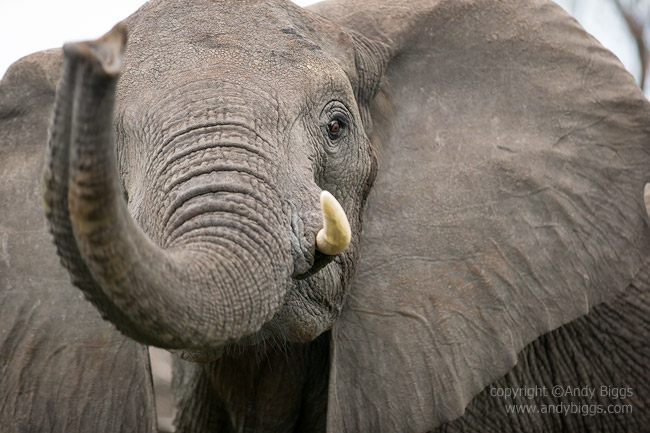
Elephant
Canon 1Dx, 70-200mm f/2.8 L IS II, 1/200 @ f/2.8, ISO 1600
Helicopter Flights
While at Nxabega, we spent some time flying around in our privately chartered helicopter. Nxabega is a fantastic location for aerial photography, because the flood plains to the east and north of camp are some of the most beautiful in all of the Okavango Delta. We had flights over papyrus forests, open flood plains and dry savannah. We had superb cloud reflections, elephant herds, giraffes, cape buffalo and the super special sitatunga. I am a big supporter of not interfering with wildlife on these aerial flights, and this means keeping a respectful distance from my subjects. I am NOT a fan of aerial photos with wildlife subjects who are running away with scared and fearful nonverbal communication. Not a fan. It’s also reckless.
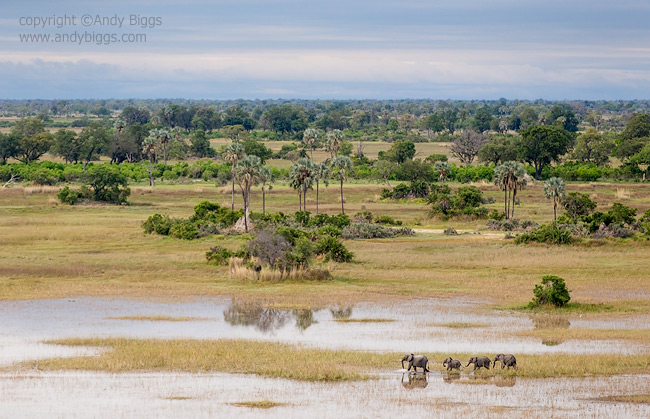
Elephants From The Air
Canon 1Dx, 70-200mm f/2.8, 1/8000 @ f/4.5, ISO 2500
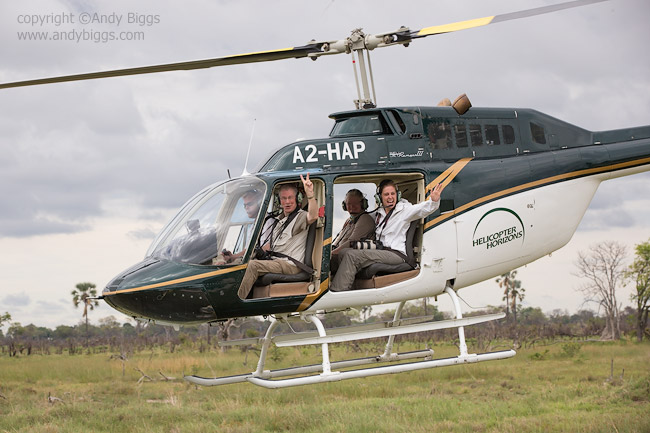
Take-off
Canon 1Dx, 70-200mm f/2.8 L IS II, 1/800 @ f/8, ISO 800
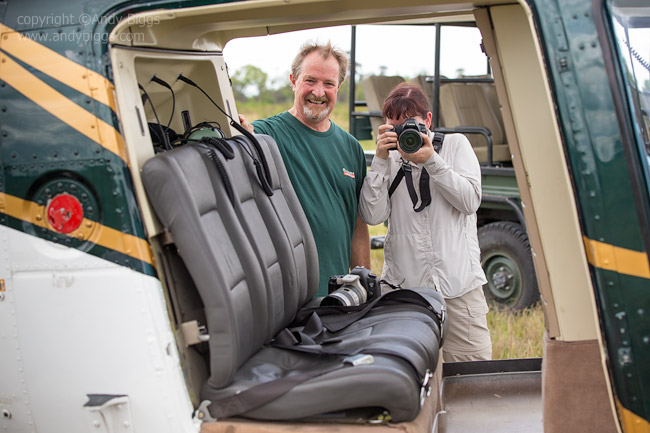
Peek-a-Boo
Canon 1Dx, 70-200mm f/2.8 L IS II, 1/1000 @ f/4, ISO 800
Big Cats
We had more success at Sandibe with the big cats, and I likely had more leopard sightings per day than on any other safari in the Okavango in the past. On my first safari we logged 7 leopard sightings in only 4 days. We even had some great cheetah sightings, including a lone male cheetah on his recent kill. And lions were plentiful as well. We observed leopards stalking and hunting on a few occasions, as well as mating lions. Oh, and lions hunting wild dogs. More on that below under Unique Sightings.

Lion
Canon 1Dx, 300mm f/4 L IS, 1/80 @ f/4, ISO 1600

Leopard
Canon 1Dx, 300mm f/4 L IS, 1/400 @ f/7.1, ISO 1600
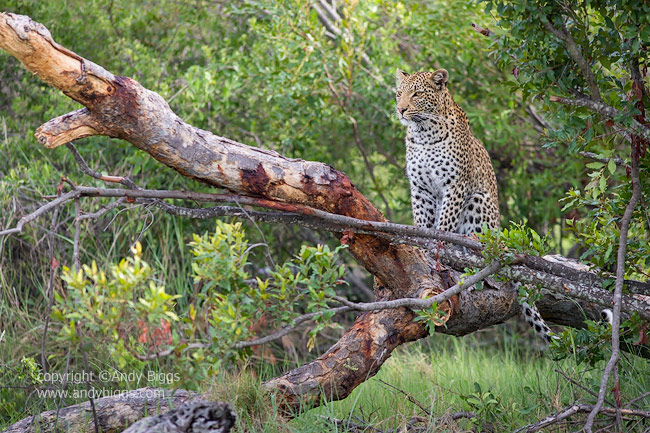
Leopard
Canon 1Dx, 300mm f/4 L IS, 1/1000 @ f/4, ISO 800
Wild Dogs, Wild Dogs and More Wild Dogs
On my second stint at Sandibe we had African wild dogs near camp for 2.5 days straight. We followed them on a hunt, which wasn’t the easiest of game drives. Wild dogs can run straight through the bush, which can make for a very rough experience. Of course some times they can run out in open areas as well, but I haven’t seen that very often when they are on a hunt. We spent enough time with the pack on 5 straight game drives where we all came away with wonderful experiences. And we had the wild dog pack being stalked by 2 adult lionesses. UGH. That really tore me apart, so read on in the next section.
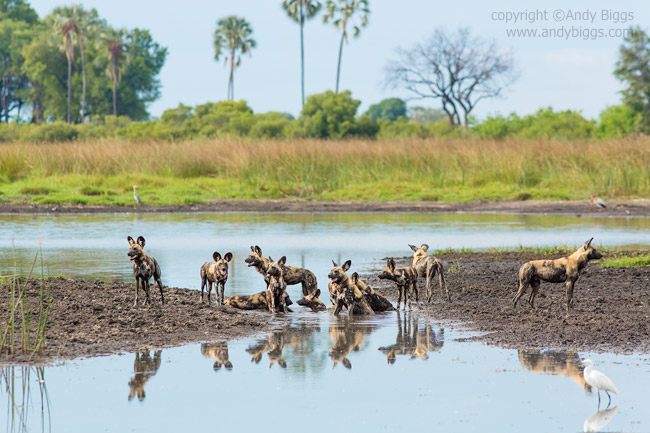
African Wild Dogs
Canon 1Dx, 300mm f/4 L IS, 1/1600 @ f/6.3, ISO 800
Unique Sightings
We had great sightings on these two safaris, however a couple of them really stood out. Let’s dive into the first one, which involves leopards and dogs. At the same time. On one afternoon we located the dog pack, sat with them until they woke up from their afternoon naps and then watched them get excited about going on a hunt. This was our first sighting of the pack on the safari, and so we had tons of desire to spend as much time as possible with them. When they began to hunt we worked very hard to keep up with them as they ran through the thick bush. After 45 minutes of bushwhacking our way to keep up with the pack, we lost sight of them but still knew their general direction. The light was fading quickly, and then we realized we had found the pack on a kill. Not just a kill, but a kill from a leopard and her two leopard cubs. The dogs had chased the leopards up a dead tree. We positioned our vehicles where we had good lines of sight of both sets of predators: dogs on the left and leopards on the right. The dogs had stolen a kudu from the leopards, and the dogs were all over it. And the leopards were stuck up a tree that they couldn’t come down from, as the dogs would continue to pursue them. Predators are extremely competitive, and a leopard with cubs will not put her cubs into a life or death situation without any benefit. African wild dogs 1, leopards 0. That was a first for me to see interaction between leopards and wild dogs, and this was a humdinger.
The other unique sighting was both thrilling and sad at the same time. There are two dominant lionesses in the northern NG31 concession, and we had spent some time watching them on earlier game drives. On this particular drive we were out searching for the wild dog tracks in an attempt to locate the pack. We found the pack sleeping under some shaded trees and sat and waited for them to get ready for their late afternoon hunt. After some minutes went by we noticed 1 lioness stalking into the area. The dogs did not see them and by the time the 2nd lioness had appeared there was 1 male adult dog fighting for his life. The lionesses had ambushed the pack from two different sides, and nothing makes me sadder than to see a wild dog meet its end. African wild dogs, often referred to as painted dogs or cape hunting dogs, are the most endangered predator in Africa with roughly 4,000 individuals left in the wild. The primary challenge for them is loss of habitat, as well as human / wild dog conflicts.
As the two lionesses stood over the wounded dog, those in my vehicle had nothing but sad thoughts. I don’t often get emotionally charged with wildlife interaction, but this one just didn’t sit with me. We left the scene as soon as a few shots were taken. Even our guide and tracker were shook up by the event.
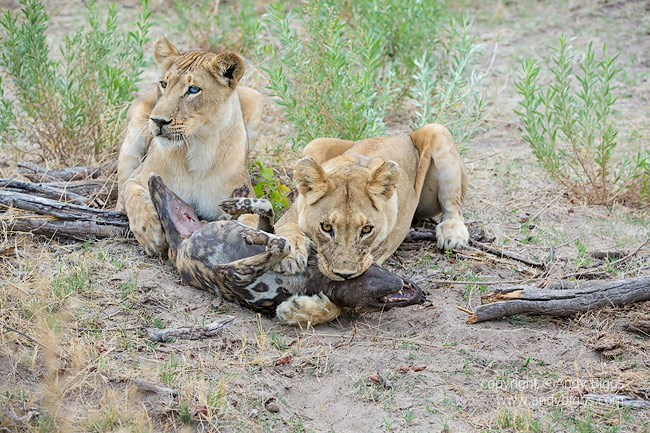
Lionesses Killing a Wild Dog
Canon 5DMk3, 70-200mm f/2.8, 1/1600 @ f/5.6, ISO 1000
Weather and Scenery
Northern Botswana can be a difficult place to learn, especially for somebody like me who has to build a business around leading the best wildlife photographic opportunities possible. The challenge is that each concession, park and camp has their own unique ‘best’ times of the years, and I have to always be on the ball to know when and where to go to serve the needs of my travelers. November and early December are a fantastic time to be in bush in the Okavango Delta, as it is when babies are born (zebras, impalas, etc), the colorful migrant birds are present and most importantly the skies are very very dramatic. Think huge clouds, reaching high in the sky, that are filled with moisture and color. The grasses are starting to green up a little bit, however it isn’t later in the season when the grasses can get tall.
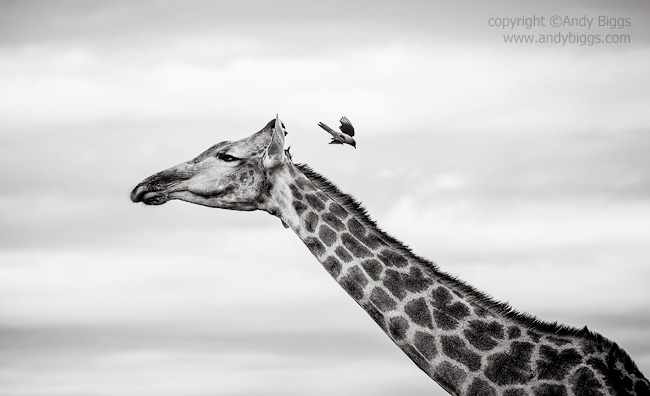
Giraffe and Oxpecker
Canon 1Dx, 70-200mm f/2.8, 1/1250 @ f/6.3, ISO 1000

Early Morning Game Drive
Canon 1Dx, 70-200mm f/2.8 L IS II, 1/640 @ f/5.6, ISO 800
Closing Thoughts and Looking Forward
In all of the times I have been in the Okavango Delta and Linyanti ecosystems this was likely the happiest set of travelers I have ever had on any safaris. I cannot wait to return again in November 2013. I have already announced the details on my dedicated safari page:
Botswana: The Premier Okavango Delta Photo Safari, November 8-17, 2013
The schedule is nearly identical, and the costs are exactly the same as last year. Come join me and Grant Atkinson in Botswana this November! It will be a safari experience you will not forget.


 Tuesday, March 5, 2013 at 08:27AM
Tuesday, March 5, 2013 at 08:27AM 
 80-400mm,
80-400mm,  Nikon in
Nikon in  Photo Gear and Reviews
Photo Gear and Reviews 


